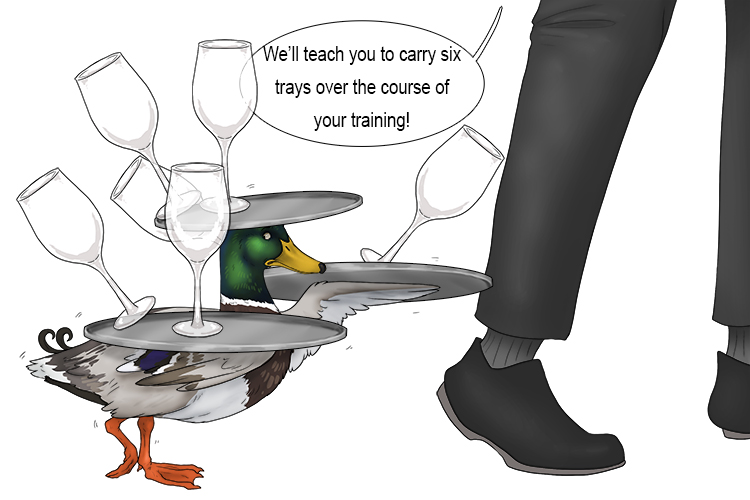Induction – Initial training given to a new employee when they start a new job
(Pronounced in-duk-shn)
To remember what induction means use the following mnemonic:
In this company, ducks are given information (induction) during their initial training upon starting a job.

Depending on the job, an induction programme can last between just one hour or a whole month. The induction process is intended to get new employees acquainted with a business. Learn in detail what is required of them, and allow them to quickly become a valuable team member. A well-designed induction process can help to reduce employee turnover and absenteeism. It can also help to improve employee morale and productivity.
An effective induction programme may involve:
- Learning about the company’s history, mission, and values.
- Understanding the company’s products and services.
- Meeting their new colleagues.
- Getting familiar with the company’s physical layout.
- Learning about the company’s policies and procedures.
- Identifying any further training needs.
- Feeling welcome and supported.
- Learning how to keep the place tidy and smart.
- Learning what to do with any paperwork you are given.
- Learning how to respond to customer questions.
- Learning how to leave messages.
- Learning what to do when things go wrong.
- Learning what clothing to wear.
- Learning how to find help during training.
- Learning the importance of initiative.
- Learning how to keep files.
- Learning how to operate the computer/computer system.
This list could be very extensive. The important point to learn is that a company should have a large document to read which sets out what is expected from an employee and a detailed list of how to best perform each task they are asked to carry out. A manager should go through each point of the induction with the new employee. For example, Disney will not let any employee near a customer until they have had at least 3 days of induction even for a very basic job.




